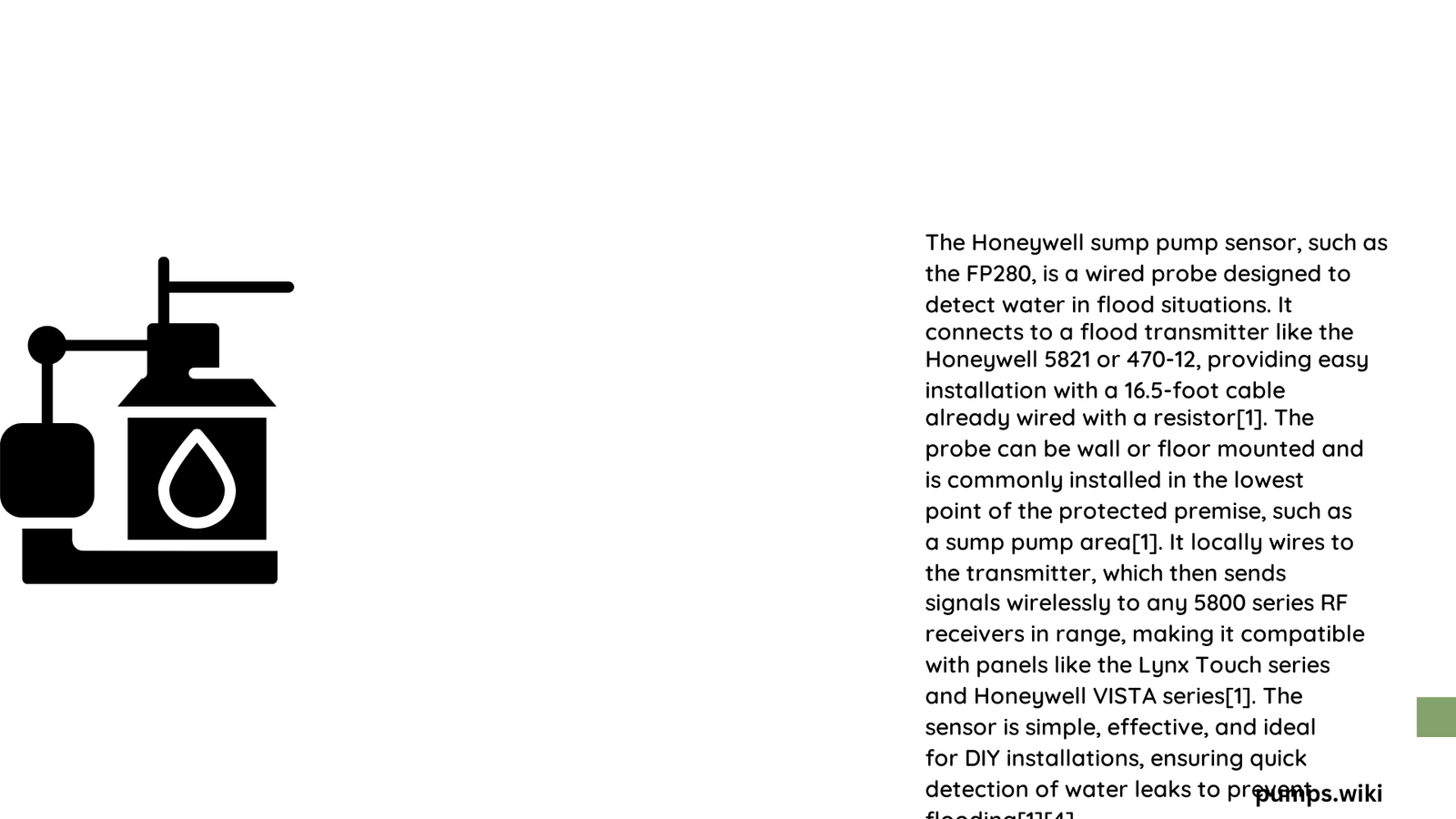The Honeywell sump pump sensor represents a critical technological solution for homeowners seeking advanced water leak detection and prevention. This sophisticated device offers real-time monitoring capabilities, enabling early identification of potential flooding risks in basements, utility rooms, and other moisture-prone areas. By providing instantaneous alerts and precise water presence detection, the sensor serves as an essential component in comprehensive home protection systems.
What Makes the Honeywell Sump Pump Sensor Unique?
How Does the Sensor Detect Water?
The Honeywell sump pump sensor, specifically the FP280 Water & Flood Probe, utilizes advanced detection mechanisms to identify water presence:
- Probe Design: Engineered with sensitive electrical contacts
- Instant Detection: Shorts circuit when water is present
- Transmission Method: Sends immediate signals to connected alarm systems
What Are the Key Installation Requirements?
Tools Needed
| Tool | Purpose |
|---|---|
| Mounting Screws | Secure sensor placement |
| Wire Connectors | Ensure proper electrical connections |
| Adhesive Tape | Alternative mounting option |
Recommended Placement Locations
- Lowest points in potential flood zones
- Near sump pumps
- Around washing machines
- Adjacent to water heaters
- Under sink areas
What Technical Specifications Should You Know?
Sensor Characteristics:
– Cable Length: 16.5 feet
– Compatibility: Multiple Honeywell alarm systems
– Detection Method: Direct electrical conductivity
How to Troubleshoot Common Sensor Issues?
- Signal Interruption
- Check wire connections
- Verify resistor placement
-
Inspect cable integrity
-
False Alarm Prevention
- Ensure dry surrounding environment
- Remove potential moisture sources
- Regularly clean sensor probe
What Systems Can the Sensor Integrate With?
The Honeywell sump pump sensor seamlessly integrates with:
– Lynx Touch panels (L5210, L7000)
– Lyric Controller
– 2GIG GC2 and GC3
– VISTA series control panels
Why Choose a Honeywell Sump Pump Sensor?
Benefits:
– Proactive water damage prevention
– Real-time monitoring
– Easy installation
– Broad system compatibility
– Reliable performance
What Maintenance Practices Enhance Sensor Longevity?
- Quarterly visual inspections
- Clean probe contacts
- Test sensor functionality biannually
- Replace if physical damage occurs
How to Maximize Sensor Effectiveness?
- Strategic placement
- Regular system checks
- Professional installation
- Integrate with comprehensive home security system
Expert Recommendations

Professionals suggest combining the Honeywell sump pump sensor with additional water detection technologies for comprehensive protection. Consider multi-point monitoring and interconnected alarm systems for maximum safety.
Cost-Effectiveness Analysis
While initial investment might seem significant, the potential savings from prevented water damage far outweigh the sensor’s cost. A single flood incident can result in thousands of dollars in repairs.
Final Thoughts
The Honeywell sump pump sensor represents more than a technological device—it’s a critical investment in home protection and peace of mind.
